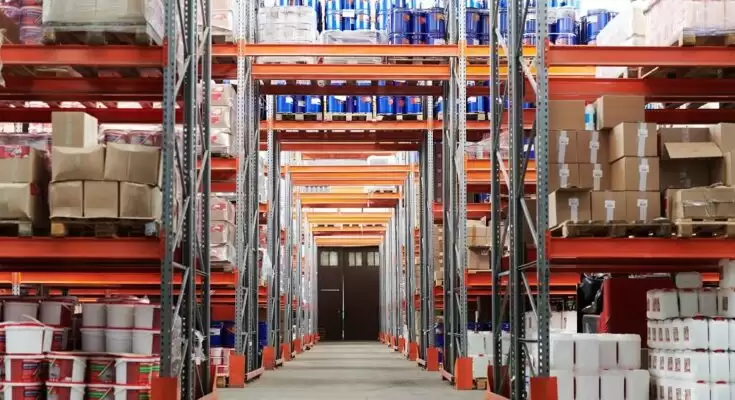Efficient warehouse management is essential for ensuring the quality and safety of stored goods. Temperature and humidity control plays a critical role in preserving the integrity of various products, such as perishable goods, pharmaceuticals, and sensitive materials. In the quest for optimal warehouse management, the integration of wireless temperature monitoring and warehouse humidity monitoring systems is revolutionizing the industry. This blog explores the future of warehouse management, highlighting the significance of wireless technology and the importance of warehouse humidity monitors in enhancing efficiency, reducing risks, and improving overall operations.
1. Real-time Monitoring and Data Analysis
Wireless temperature monitoring systems enable real-time monitoring and data collection of temperature conditions within the warehouse. These systems employ wireless sensors strategically placed throughout the facility to continuously monitor temperature levels. This real-time data, coupled with advanced analytics, provides valuable insights into temperature patterns, trends, and potential deviations. By harnessing this information, warehouse managers can make informed decisions, optimize storage conditions, and proactively address temperature-related issues to maintain product quality and safety.
2. Enhanced Efficiency and Productivity
The integration of wireless temperature monitoring and warehouse humidity monitoring systems significantly enhances warehouse efficiency and productivity. These technologies eliminate the need for manual temperature checks, reducing the time and effort spent on routine inspections. Instead, warehouse staff can focus on core tasks, such as inventory management and order fulfillment. Real-time monitoring also enables immediate response to temperature and humidity variations, minimizing the risk of product damage or spoilage. By streamlining operations and ensuring optimal conditions, wireless technology boosts overall productivity and reduces costs.
3. Risk Mitigation and Compliance
Warehouse humidity monitoring is crucial for mitigating risks associated with moisture-sensitive products and materials. Excessive humidity levels can lead to mold growth, product deterioration, and compromised integrity. Warehouse humidity monitors continuously measure and monitor humidity levels, enabling early detection of high-humidity environments. Alerts and notifications can be set to inform warehouse managers of any deviations from acceptable humidity ranges. By proactively managing warehouse humidity, businesses can mitigate the risk of damage and comply with industry regulations, ensuring product quality and customer satisfaction.
4. Remote Monitoring and Control
Wireless technology enables remote monitoring and control of temperature and humidity conditions in the warehouse. Warehouse managers can access real-time data and control settings through web-based interfaces or mobile applications. This remote accessibility is particularly advantageous for large or multi-site warehouses. Managers can monitor multiple locations simultaneously, making informed decisions from anywhere at any time. The ability to adjust temperature and humidity settings remotely allows for a swift response to environmental changes, ensuring optimal conditions and reducing the need for on-site visits.
5. Preventive Maintenance and Predictive Analytics
Wireless temperature monitoring and warehouse humidity monitoring systems offer preventive maintenance capabilities through continuous monitoring and predictive analytics. The collected data helps identify patterns and trends, enabling early detection of potential equipment malfunctions or issues. With predictive analytics, warehouse managers can anticipate system failures or deviations from optimal conditions. This proactive approach allows for preventive maintenance, reducing the risk of costly breakdowns, minimizing downtime, and extending the lifespan of HVAC and humidity control equipment.
5. Seamless Integration with Warehouse Management Systems
Wireless temperature and humidity monitoring systems can seamlessly integrate with existing warehouse management systems (WMS). The integration allows for centralized control and coordination of temperature and humidity management, inventory tracking, and order fulfillment. Data from wireless sensors can be automatically fed into the WMS, providing a holistic view of warehouse operations. The integration streamlines processes enhances accuracy, and facilitates efficient decision-making, leading to improved inventory management, reduced errors, and optimized order processing.
6. Sustainability and Environmental Responsibility
Wireless temperature monitoring and warehouse humidity monitoring contribute to sustainability and environmental responsibility. By ensuring optimal storage conditions, these systems minimize waste and reduce the carbon footprint associated with product spoilage or damage. Additionally, wireless technology eliminates the need for manual temperature checks, reducing paper usage and promoting a more eco-friendly approach. By embracing wireless temperature and humidity monitoring, warehouses can demonstrate their commitment to sustainability while achieving operational efficiencies.
7. Improved Inventory and Shelf Life Management
Wireless temperature monitoring systems combined with warehouse humidity monitors play a crucial role in inventory and shelf life management. Different products have specific temperature and humidity requirements to maintain their quality and extend their shelf life. By accurately monitoring and controlling these factors, warehouse managers can optimize inventory storage conditions. Real-time data and alerts from wireless systems allow for timely adjustments, ensuring that products are stored within their ideal temperature and humidity ranges. This precision reduces waste, minimizes product spoilage, and maximizes the shelf life of perishable goods, resulting in improved inventory management and cost savings.
8. Traceability and Quality Assurance
Wireless temperature monitoring systems provide comprehensive traceability and quality assurance for warehouse operations. With the ability to log and record temperature and humidity data over time, these systems offer a detailed audit trail. This traceability proves invaluable in identifying any temperature fluctuations or deviations that may impact product quality. In the event of a quality issue, warehouse managers can easily retrieve historical data to investigate and resolve the problem. Furthermore, wireless systems often provide built-in reporting features, allowing for the generation of compliance reports and certificates that demonstrate adherence to industry regulations and quality standards.
9. Adaptability to Changing Business Needs
Wireless temperature monitoring and warehouse humidity monitoring systems are highly adaptable to changing business needs. As warehouses evolve and expand, these systems can easily scale to accommodate new areas or increased storage capacity. Wireless sensors can be added or relocated without the need for complex rewiring, ensuring flexibility and agility in adapting to changing warehouse layouts. This adaptability is particularly beneficial for businesses experiencing growth or those operating in dynamic industries where storage requirements may fluctuate over time.
Conclusion
The future of warehouse management lies in the seamless integration of wireless temperature monitoring and warehouse humidity monitoring systems. By leveraging the power of real-time data, remote accessibility, preventive maintenance, and predictive analytics, businesses can optimize warehouse operations, reduce risks, and enhance overall efficiency. These systems enable precise temperature and humidity control, ensuring product quality, regulatory compliance, and customer satisfaction.
With improved inventory management, traceability, and adaptability, warehouses can operate at peak performance, minimize waste, and drive sustainable growth. As technology continues to advance, embracing wireless temperature and humidity monitoring is essential for warehouses seeking to stay competitive, maintain product integrity, and deliver exceptional service in the evolving landscape of modern supply chain management.








